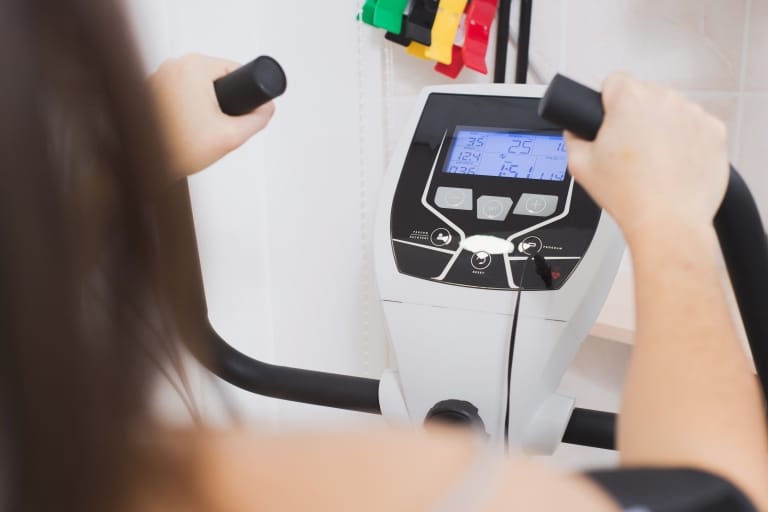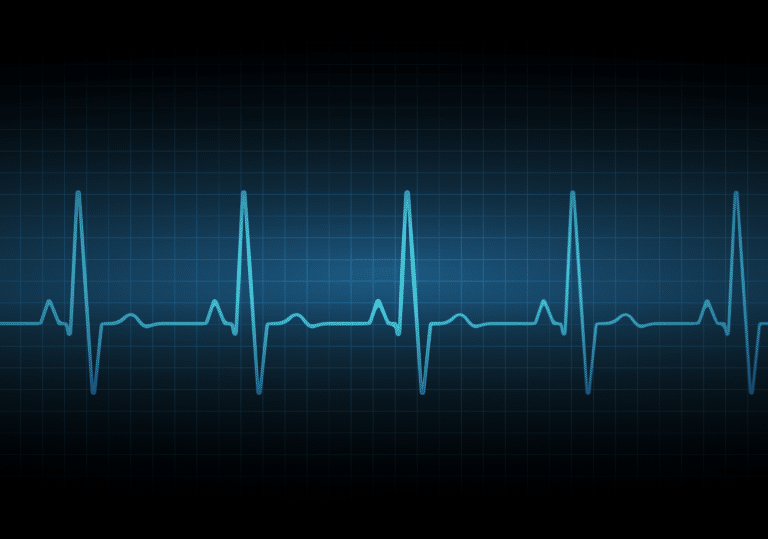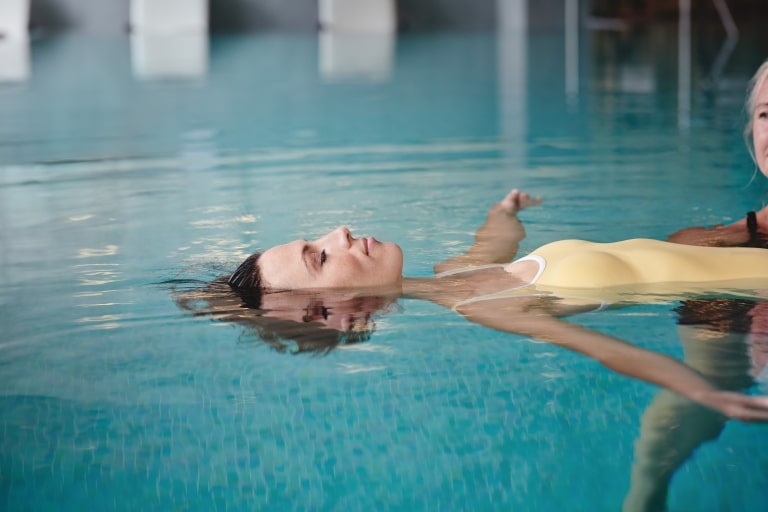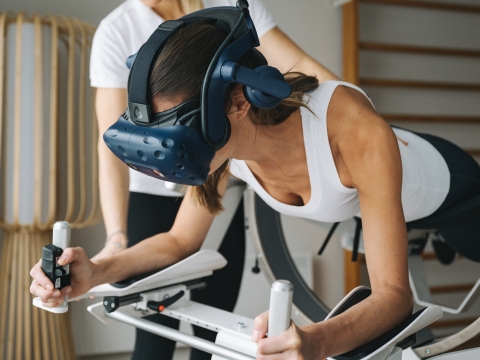what your heartbeat says about you
HRV measurement
How regular is your heartbeat? Or to be more precise, how irregular? A high variability between heartbeats is essential for a healthy organism and enables conclusions about the body’s ability to recover. Read on to find out how you can improve your heart rate variability and how an HRV measurement works.
“If our heart is beating, we are alive – and stress, as incredible it might initially sound – is the engine of life,” says Dr. Georg Stossier, holistic medicine practitioner at VIVAMAYR, making us sit up and take notice. He then explains how recovery is important, specifically in relation to prior strain, so that we stay healthy and in balance in the long term. “If you are under a massive amount of pressure for an entire week due to a deadline, you should consciously take time to recover the following weekend. If the period of increased pressure lasts longer, sometimes months or even years, then a longer period of regeneration is necessary to appropriately recover and rediscover your equilibrium. Acute stress only has a negative effect when it becomes chronic,” he explains.
Heart rate variability: the body’s answer to stress
If something triggers “stress” in our body – a call from the boss, deadline pressure, arguments, too many people in one place, etc. – then the sympathetic nerve in our body is activated, which influences our heartbeat, increases heart rate, slows down digestion and expands our pupils, among other things. It prepares us internally for “fight” or “flight”. However, nowadays we generally tend not to respond to a challenging situation with either of these reactions. We make a great effort to maintain our composure externally, teetering from one stress-inducing situation to the next in our jam-packed day-to-day lives. This doesn’t leave much time for adequate recovery. Yet a couple of useful tips can help you recognize stress early on and reduce it effectively.

Ultimately, our heart rate variability is crucial for determining how well our body can adjust to changing circumstances – both positive and negative. Heart rate variability describes the duration of the intervals between heartbeats. These vary in length in healthy people. This is so that the heartbeat can adapt immediately to pressure and its alleviation. The success of this gives us an insight into our overall state of health and physical fitness. Although this heartbeat adjustment, which takes place in a matter of milliseconds, is unconsciously, it can be influenced and improved through certain activities. These include, for example, all methods of relaxation such as massage treatments, breathing exercises, yoga and moderate exercise, as well as Kneipp therapy, saunas, active breaks, laughing and sports. Simulated altitude training, known as intermittent hypoxic-hyperoxic training in technical jargon, also promotes heart rate variability by improving the energy production in the mitochondria. These are the parts of the cell in which the body produces energy. The IHH method is also used as a form of therapy at VIVAMAYR.
“While the heart rate increases and the sympathetic nervous system is activated with each inhalation, the parasympathetic nervous system is activated as we exhale, lowering our heart rate. This is also referred to as respiratory sinus arrhythmia. A certain level of arrhythmia is essential for our organism to remain healthy,” Dr. Georg Stossier explains. He goes into more detail, “Especially among athletes, this respiratory sinus arrhythmia can be very easily detected using an ECG. The higher it is, the better somebody is able to physically adapt to changing circumstances. However, the exact opposite occurs in the event of a burnout. The heartbeats become more regular and the adaptive capacity is lost, because the entire system is overloaded.”
How HRV measurement works
An ergometer is used to detect the heart rate variability in conventional medicine. However, the blood gas levels are analyzed before and after 10 minutes of exertion on the bike at VIVAMAYR. In particular, the sodium and potassium levels, which are related to the hormones formed in the adrenal gland (especially adrenaline, noradrenaline, aldosterone, cortisol and DHEA), are compared to one another. The pH and lactate values are also checked. A special formula is then used to transfer the values to a points system and assess them. This makes it possible to report how well-balanced or overburdened a person is. “We use the HRV measurement with our guests when it is indicated,” Dr. Stossier says, “For example, when the resting metabolic rate measurement yielded poor results or our guests are really exhausted. But we also carry out these tests on athletes who are supposedly healthy.”

The good thing is that heart rate variability can be influenced relatively rapidly. “If indicated, we take the HRV measurement at the start and end of a VIVAMAYR stay. The time between these two measurements is normally one to two weeks. The comparison of the results always shows an improvement at the end,” says Dr. Stossier, of his own experience. The healthy eating and sleeping rhythm, moderate movement and the balanced diet allow for deep regeneration of the body, mind and spirit during a stay at VIVAMAYR. The recuperative effect becomes clear in the comparative HRV measurement, and is reflected in the improved test results at the end.
HRV measurement: understanding heart rate variability in the ECG
In the context of a medical ECG (electrocardiogram) which measures cardiac activity, peaks in amplitude occur at seemingly regular intervals (see image). These so-called R waves indicate the greatest activity of the heartbeat. The electrical activity of the initial and ending heartbeat, on the other hand, is located in the smaller wave length in between. It describes the range of variability of physical pressure and relief and the associated regulation of regeneration and performance.

This, in turn, is controlled by the vegetative nervous system (sympathetic and parasympathetic nervous system), which is dependent on external circumstances but can also be influenced using various methods (breathing exercises and similar exercises, see above). “Heart rate variability is the highest in young people, while it is comparatively very low in old people. As a rule, the standard values for heart rate variability are between 55 and 105 milliseconds. For older or stressed people, who are at risk of slipping into burnout territory, this is between 20 to 45 milliseconds,” Dr. Georg Stossier reports.
Healthy heart rate variability thanks to balanced stress levels
Stress is always expressed in the body as an activation of the sympathetic nerve of the vegetative nervous system and is intrinsically neutral. How this stress ultimately effects our organism and our well-being – positively or negatively – depends on our individual tolerance and assessment of stress. While a challenge may quickly become overwhelming to some people, others may be able to handle more before reaching their limit. To become aware of this decisive point and be able to react accordingly, slow exercises performed consciously (breathing exercises, physical exercises) are helpful, on one hand, while it is also important to develop a healthy amount of self-esteem so as to be able to know and protect your own limits, on the other hand. What is more, methods that train your own ability to relax can provide relief in the event of too much stress and – by having a positive effect on the heart rate variability – can increase our tolerance for stress.
HRV in practice: overcoming stress with VIVAMAYR
The VIVAMAYR Stress Control Program helps you learn how to deal more effectively with stressful situations. While your digestion is harmonized via alkaline-based nutrition and a healthy eating, waking and sleeping rhythm, the parasympathetic activity of the nervous system is stimulated using relaxation methods such as shiatsu, yoga and massages. In turn, this improves heart rate variability and makes your more resistant to the challenges of everyday life. Do you have questions about our programs? Get in touch with us! We’ll be happy to advise you!

Sources
Albert Alexandra, Droste Susanne, 2022, Mentaltraining für Sportler [Mental Training for Athletes], 1st edition, riva Verlag, Munich
German Society for Endocrinology, n.p., n.d., Erkrankungen der Nebennieren [Diseases of the Adrenal Glands], accessed 11.01.2022, 3:02 pm











